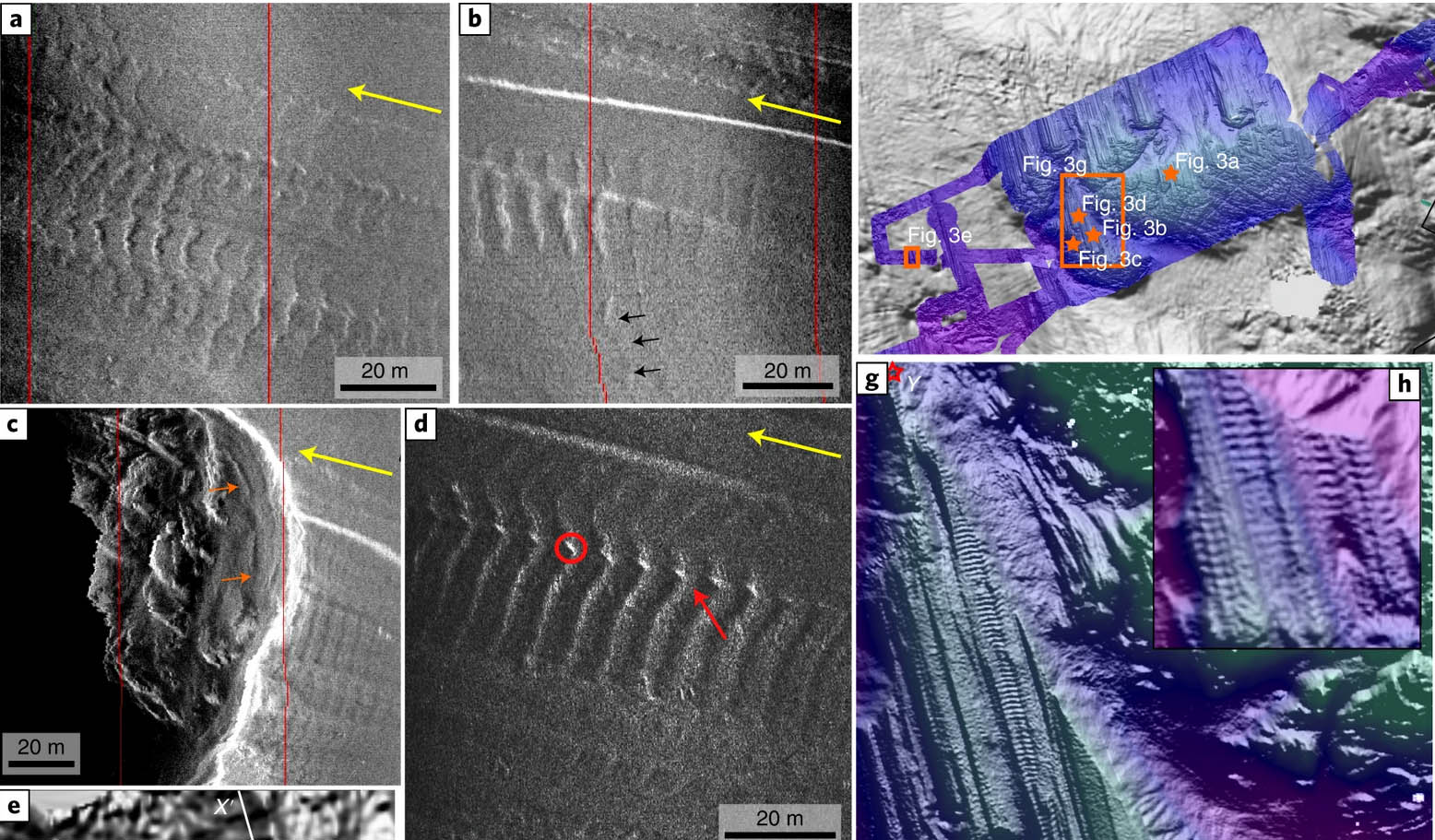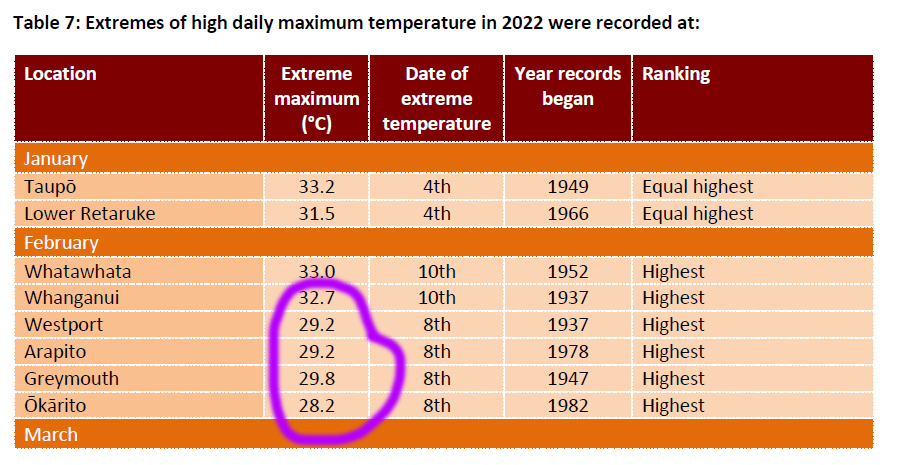Anyone who saw the frozen images of North America in 2014, and the climate change explorers trapped in Antarctica’s “summer” sea ice, might find our feature from July 2011 interesting reading:
ICE ICE BABY
SUB: SUN POWERING DOWN, MINI ICE AGE LOOMING?
DECK: Three hundred years ago, the Sun’s magnetic forces went deathly quiet for nearly a century, in what scientists have named the ‘Maunder Minimum’. At first it was just a little cooler, but as the Sun’s furnaces stayed dormant for decades, down on Planet Earth the cold began to really bite. Millions died in what became known as The Little Ice Age. Now, US solar scientists have just made what they themselves are calling “a major announcement”: history is about to repeat, our sun is powering down, possibly for the rest of your life
WORDS BY IAN WISHART

It’s the biggest story of the year that you didn’t hear about. Nor have you seen it properly explained on the TV News. That’s because few journalists understand science, and because most of them are still locked into the “global warming” mantra.
But what Earth is about to experience hasn’t been seen by anyone alive today, and the last time it happened it got so cold that even the English Channel froze over. Could that happen today? Nobody knows for sure.
What we do know is that top American solar scientists held a news conference just a couple of weeks ago to announce “the surprising shutdown of the solar cycle mechanism.”[1]
Solar cycles normally move in 11 year patterns. At least, they have done throughout the modern scientific age. Those patterns dictate how many sunspots and solar magnetic storms there are, which in turn are a reflection of how active the Sun is. We’re currently in the middle of Solar Cycle 24, and the Sun is barely alive magnetically. But now the latest tracking data from specialist satellites and radio telescopes is showing the upcoming Solar Cycle 25 may be dead in the water.
“New jet streams [on the surface of the Sun] associated with a future 2018-2020 solar maximum were expected to form by 2008 but are not present even now, indicating a delayed or missing Cycle 25,” report the scientists.
“A missing jet stream, fading spots, and slower activity near the poles say that our Sun is heading for a rest period.” The next solar cycle, they say “may not happen at all.”
Scientists don’t normally speak dramatically, and while their comments may not have the immediate guttural impact of “give me all your money, this is a hold-up”, nonetheless in scientific terms their language in a news conference is just as direct.
“This is highly unusual and unexpected,” Dr. Frank Hill, associate director of the NSO’s Solar Synoptic Network, says of the results. “But the fact that three completely different views of the Sun point in the same direction is a powerful indicator that the sunspot cycle may be going into hibernation.”
Two more scientists, Matt Penn and William Livingston, reported their findings that the Sun’s magnetic energy is getting weaker, a little bit like a car battery going flat and cranking the engine slower. There comes a point, they warn, where the Sun will no longer be able to fire up.
There are “changes deep inside the Sun”, adds US Air Force solar scientist Richard Altrock. Because the Sun is so large, vestiges of its magnetic storms from 11 years ago still remain on the surface. Normally, the magnetic activity from a new solar cycle emerging near the equator pushes the old storms out of the way in what scientists call “the rush to the poles”, but it doesn’t look like there’s enough huff and puff left to do that.
“No one knows what the Sun will do in that case,” says Altrock.
“If we are right,” Frank Hill concludes, “this could be the last solar maximum we’ll see for a few decades. That would affect everything from space exploration to Earth’s climate.”
It’s that last comment that everyone is speculating about. While Hill has carefully noted his team are confining themselves only to the Sun, and not speculating about ice ages, we are nonetheless heading into uncharted territory. Climate scientists have tried to put a brave face on the announcement by claiming CO2’s warming influence will be much stronger than any cooling caused by a quiet sun. However, there’s been little evidence of climate warming over the past decade, despite a big rise in CO2 levels, and the sun hasn’t even fully powered down yet.
So what happened when the sun went quiet during the Maunder Minimum?
“The cold began on January 6, 1709, and lasted in all its rigour until the twenty-fourth,” wrote one French priest in his journal. “The crops that had been sewn [sic] were all completely destroyed…. Most of the hens had died of cold, as had the beasts in the stables. When any poultry did survive the cold, their combs were seen to freeze and fall off. Many birds, ducks, partridges, woodcock, and blackbirds died and were found on the roads and on the thick ice and frequent snow. Oaks, ashes, and other valley trees split with cold. Two thirds of the vines died…. No grape harvest was gathered at all in Anjou…. I myself did not get enough wine from my vineyard to fill a nutshell.”[2]
During the 1600s, France was hit by repeated famines caused by crop failures, which in turn led to disease outbreaks because of poor nutrition and the cold.
“Famine was widespread during this period, from the food shortages arising from the activities of the League in the 1590s, through subsistence crises of 1630, 1649, 1652, 1661, and 1694, to the great grainless winter of 1709 (Le Roy Ladurie 1987:272). The immediate triggers of these crises were periods of very cold or very damp winters and unusually wet summers. For example, the famines of 1630 and 1661 occurred during peace time and were entirely due to bad weather,” writes ecology professor Peter Turchin.[3]
France suffered heavy population losses as it struggled to balance the needs of the people against the needs of the state.
“Historians proposed various explanations for [the population decline], of which two appear most probable: the significant worsening of the climate and the great demands placed on the French peasantry by the aggressive external policy of Louis XIV.”[4]
Turchin’s analysis found real wages in France peaked at the end of the “golden age” – corresponding to the end of the Medieval Warm Period, and were slashed to one sixth of their values by the Little Ice Age, recovering to a maximum level of half what they had been.
Across the English Channel, Britain wasn’t faring much better. In the winter of 1683/84, the River Thames froze solid for two months, and in fact the English Channel itself froze up, Arctic style, between Dover and Calais. It wasn’t just icebergs in the channel, you could almost walk on water from England to France.
As to the Thames, it had become quite partial to freezing during the Little Ice Age, and became the scene of “frost fairs” when it did:
“On the 20th of December, 1688, a very violent frost began, which lasted to the 6th of February, in so great extremity, that the pools were frozen 18 inches thick at least, and the Thames was so frozen that a great street from the Temple to Southwark was built with shops, and all manner of things sold. Hackney coaches plied there as in the streets. There were also bull-baiting, and a great many shows and tricks to be seen. This day the frost broke up. In the morning I saw a coach and six horses driven from Whitehall almost to the bridge (London Bridge) yet by three o’clock that day, February the 6th, next to Southwark the ice was gone, so as boats did row to and fro, and the next day all the frost was gone. On Candlemas Day I went to Croydon market, and led my horse over the ice to the Horseferry from Westminster to Lambeth; as I came back I led him from Lambeth upon the middle of the Thames to Whitefriars’ stairs, and so led him up by them. And this day an ox was roasted whole, over against Whitehall. King Charles and the Queen ate part of it.”[5]
And you can see from the records how the Little Ice Age started off gradually, bit hard, and then eased off. The Thames froze 26 times during the LIA. Twice in the 15th century, four times in the 16th century, ten times in the 17th century, eight times in the 18th century (including 1709) and one final occasion in the 19th century (1814). That’s the last time the Thames has ever frozen over at London, although it was reportedly solid enough on that occasion that an elephant was led over it.
Thomas Wright’s epic History of France[6] records of the winter of 1709 on the European mainland:
“While Louis’s kingdom was still overwhelmed with the alarm caused by the disasters of the year 1708, it was struck with a new calamity. A frost, unexampled for its severity, set in on the 9th of January 1709, and continued without any relaxation for more than a month.
“Even the impetuous Rhone was frozen over; and spirituous liquors became congealed by the side of the fire…Olives, vines, fruit-trees in general, corn in the ground, all perished: so intense was the cold, that the solid trunks of great trees are said to have burst asunder as though they had been blown to pieces by gunpowder; and stones were split.
“With a prospect of the entire loss of the crops, the prices of provisions rose to an extravagant height, and the population of the country was exposed to actual starvation. Whole families were found frozen to death in their houses.”
Think about that mental image for a moment. Tens of millions died of cold, disease and hunger in Europe (where the events are best-documented because of the civilisation level and literacy of inhabitants).
If you look back a few hundred years, mothers frequently had eight to ten children. They had to, just to ensure three or four survived long enough to have kids of their own. So, low population rates in the Middle Ages were not from lack of sex, but from a climate that was hostile to crops, people and wildlife.
Grimm’s Fairy Tales, and others from that period, frequently talk of ravenous wolves and hard times. Humans were facing more predation from wolves because the climate was hurting everyone. The imagery in this tale from Hans Christian Andersen speaks volumes about life in the Little Ice Age:
“In the winter, when the fields were covered with snow, and the water filled with large blocks of ice which I had blown up to the coast,” continued the Wind, “great flocks of crows and ravens, dark and black as they usually are, came and alighted on the lonely, deserted ship. Then they croaked in harsh accents of the forest that now existed no more, of the many pretty birds’ nests destroyed and the little ones left without a home; and all for the sake of that great bit of lumber, that proud ship, that never sailed forth. I made the snowflakes whirl till the snow lay like a great lake round the ship, and drifted over it. I let it hear my voice, that it might know what the storm has to say…”[7]
“I moaned through the broken window-panes, and the yawning clefts in the walls; I blew into the chests and drawers belonging to his daughters, wherein lay the clothes that had become faded and threadbare, from being worn over and over again. Such a song had not been sung, at the children’s cradle as I sung now. The lordly life had changed to a life of penury. I was the only one who rejoiced aloud in that castle,” said the Wind. “At last I snowed them up, and they say snow keeps people warm. It was good for them, for they had no wood, and the forest, from which they might have obtained it, had been cut down. The frost was very bitter, and I rushed through loop-holes and passages, over gables and roofs with keen and cutting swiftness. The three high-born daughters were lying in bed because of the cold, and their father crouching beneath his leather coverlet. Nothing to eat, nothing to burn, no fire on the hearth! Here was a life for high-born people! ‘Give it up, give it up!’ But my Lord Daa would not do that. ‘After winter, spring will come,’ he said, ‘after want, good times. We must not lose patience, we must learn to wait.”
By the time the “good times” arrived, Hans Christian Andersen (who was 11 years old when the northern hemisphere experienced “the year without a summer” in 1816[8]) and the fictional characters in his story had long been laid to rest.
Some of humanity’s darkest literature dates from these times of endless winter – John Polidori’s The Vampyre from 1819, or Frankenstein from 1818, for example.
Will the planet get that cold again if the Sun now goes silent as predicted? We just can’t tell. But the threat to human and animal life from the cold is far greater than the threat from warming. When it’s cold, food crops die.
Prediction: Wool will make a serious fashion comeback.
[1] Southwest Research Institute Planetary Science Directorate
http://www.boulder.swri.edu/~deforest/SPD-sunspot-release/SPD_solar_cycle_release.txt
Supplemental images: http://www.boulder.swri.edu/~deforest/SPD-sunspot-release/
[2] Times of Feast, Times of Famine, Emmanuel Le Roy Ladurie, Doubleday, 1971
[3] http://www.eeb.uconn.edu/people/turchin/PDF/5Valois.pdf
[4] Ibid
[5] Original eyewitness account taken from The Beauties of England and Wales, reprinted in The Mirror of Literature, Amusement, and Instruction, Vol. 13, No. 355., Saturday, February 7, 1829, republished by The Gutenberg Project http://www.archive.org/stream/themirrorofliter10950gut/10950.txt
[6] History of France, Vol 2, by Thomas Wright, p228, published c1859 by The London Printing & Publishing Company
[7] Hans Christian Andersen, “The Story of the Wind”, http://hca.gilead.org.il/the_wind.html
[8] Officially, this coincided with a drop in sunspot activity on the sun’s surface known as ‘the Dalton Minimum’. Added to the mix however was dust thrown into the atmosphere by a large volcanic eruption in Indonesia, so 1816 was a double whammy year. Nonetheless, astrophysicists point out that during the Maunder and Dalton Minimums, the sun physically shifted its position in the solar system, a stunt it apparently pulls every 178 to 180 years, known as ‘inertial solar motion’. It is not yet known whether ISM has any added climate impact.






